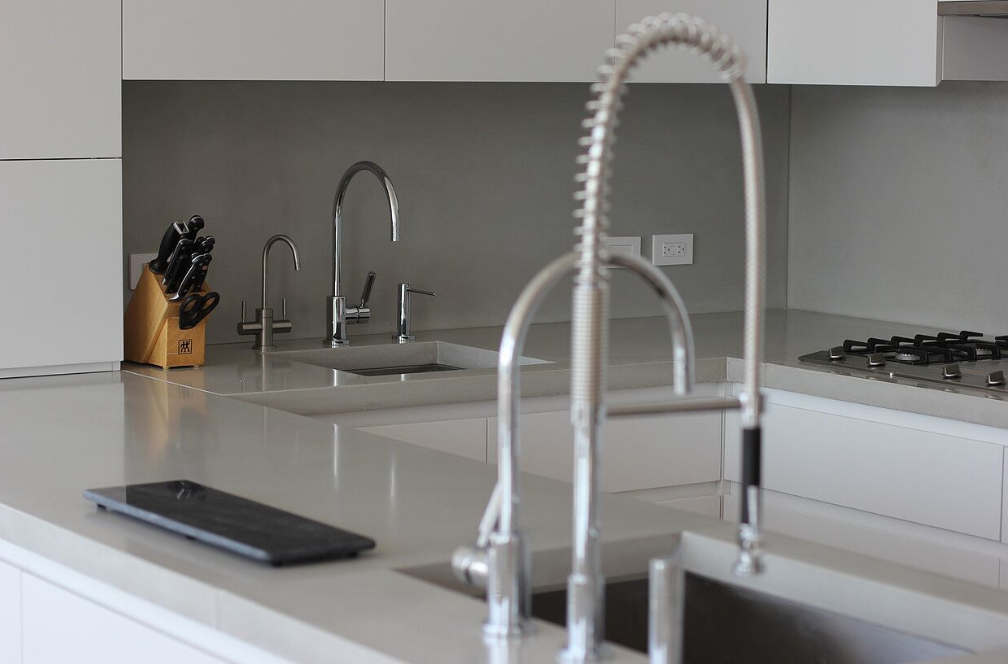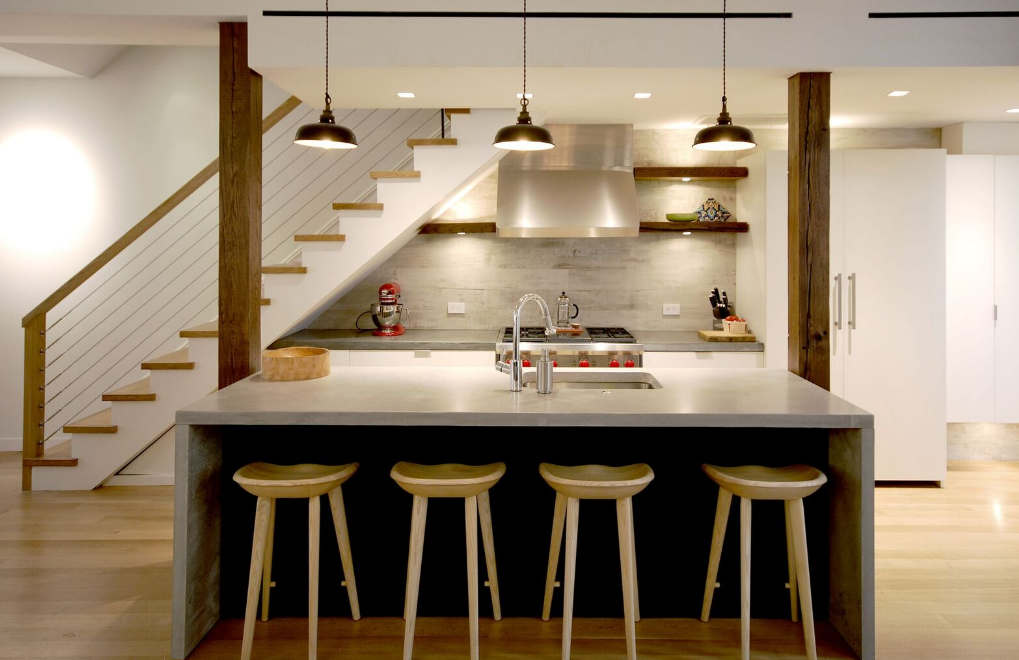When choosing a countertop, you’ll find there are many choices, along with pros and cons for each. And if you’re looking for something warm, natural and simple, concrete countertops are an option to consider.
Concrete, with its smooth and surprisingly warm surface, is increasingly popular, but requires research to make sure it’s right for you. We turned to local fabricators Steve Melnick of Concrete Central and Remik Iwuc of Concrete Shop for their expertise.
Pros and Cons of Concrete Countertops
Versatility tops the list of pros. Because concrete is cast (see more on that below) there are endless choices with shape, thickness, size and features (think integrated sinks, built-in drainage boards, a recess designed to accommodate a chopping block perfectly). But concrete countertops aren’t for everyone.
“You have to be open to a bit of natural imperfection. This is hand finished, and that comes through in the end result. If you want something very pristine and machined, you may be better off with something different,” says Melnick.
The other important piece of advice: Concrete countertop installation requires an experienced professional. It may seem like a do-it-yourself project, but it requires a lot of skill to get it right. Iwuc says it’s so important to review portfolios. “We’re like chefs…we all use the same ingredient, but we all have our way of adding in magic!”
What to Expect for Fabrication and Timing
If you decide to go with concrete, you can expect to have the fabricator come to do the templating, as you would with any countertop material. Back at the shop, a mold is built and the wet concrete poured in, which dries for two days in the mold and two days outside of it. Sealer, which comes in finishes ranging from matte to high gloss, leaves the surface water and stain-resistant. It must be applied at the shop over a two-day period, and then takes another week or so to cure. For a more natural finish that will get a patina over time, Iwuc suggests a wax finish. In some cases — on an oversized island with a waterfall edge, for example — the countertops are cast on site. Lead times range from 4-10 weeks.
Maintenance and Everyday Precautions

This New York kitchen was designed by D’Apostrophe Design with concrete countertops by Concrete Shop.
This is pretty straightforward. Mild non-abrasive cleaners are best. Rubbing with beeswax now and then adds some protection and a nice finish, but isn’t necessary. Another thing: Don’t cut on the surface, but mostly because it will dull your knives. And extremely hot pots should be placed on trivets, as the heat may damage the sealer.
It was once advised that sealers be reapplied annually, but Melnick says that these have come a long way, so most people don’t need to reapply that often, or at all. The exception is a heavily-used kitchen (and by that, Melnick is referring to culinary professionals). One of the warnings that comes with concrete is hairline cracks that can develop.
“This was more the case with traditional concrete 5-10 years ago. We’re using more GFRC [glass fiber reinforced concrete] which is much better,” says Iwuc. And if you do see a crack, Melnick says it won’t impact the structural integrity. It can be patched, but it can also be left alone to add to the patina.
Prepare for a Bit of Sticker Shock
At approximately $150 per square foot (average, installed; prices vary by project, location, and conditions at job site), it is comparable in price to marble and other stones. But it’s a mistake to think of it as “just concrete” like what you see getting poured around the city all the time. “It’s very labor intensive. Prices have fallen with other materials — stone, Corian, quartz — because of competition and technology. But that’s not the case with concrete,” says Iwuc.

There are many ways to customize concrete countertops to suit your needs. Here are examples of a built-in drainage board and a trivet by Concrete Central.
You can go with color and interesting aggregates, but most keep it simple and natural: The beauty of concrete is that you can play around with colors. “We can do anything that’s on the Benjamin Moore color wheel and there are color stains that you can apply to just the surface. But clients tend to go with the natural gray because they want that concrete look,” shares Melnick.
Most clients also go with pure concrete, but you can mix in aggregates for something more customized. One of Melnick’s clients on Long Beach collected beach glass, so he mixed that in. For a professional baker in Manhattan, he inset a large piece of broken-edged marble to be flush with the concrete surface. It’s important to remember, though, that customizing with color and aggregates will add cost.
Do you have any questions in particular about concrete countertops? Please leave a comment here and we’ll get you an answer!
Related:











